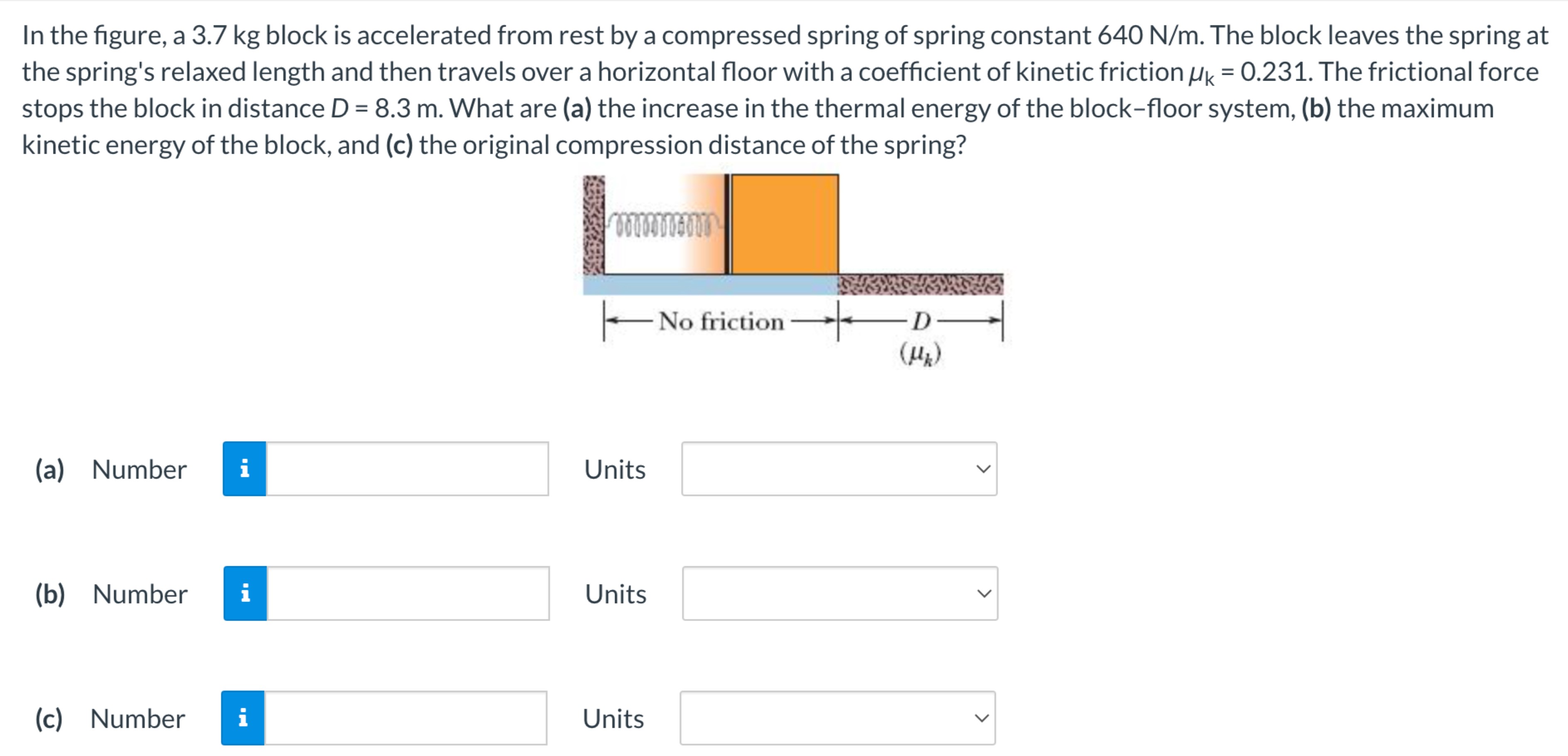In the figure, a 3.7 kg block is accelerated from rest by a compressed spring of spring constant 640 N/m. The block leaves the spring at the spring's relaxed length and then travels over a horizontal floor with a coefficient of kinetic friction μk = 0.231. The frictional force stops the block in distance D = 8.3 m. What are (a) the increase in the thermal energy of the block-floor system, (b) the maximum kinetic energy of the block, and (c) the original compression distance of the spring? (a) Number Units (b) Number Units (c) Number Units
